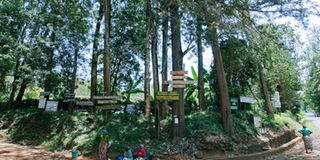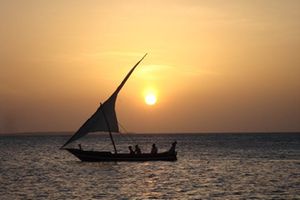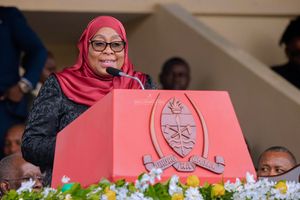East Usambara biosphere reserve nominated to maintain status for another ten years

Muheza. The East Usambara Biosphere Reserve (EUBR) has once again been nominated for continued recognition as a biosphere reserve for another ten years.
Presenting the write-ups which were sent to the United Nations Educational, Scientific and Cultural Organisation (Unesco) and that were approved by Tanga Regional Authorities to the Tanga Regional Commissioner, Mr Martin Shigela, in Amani, in the heart of the reserve, Amani Nature Reserve (ANR) conservator Mwanaidi Kijazi said that the nomination was a recognition of national, regional and district efforts to sustain the reserve environment.
“Recognition of this reserve under the Unesco Programme shows how serious the government of Tanzania is adhering to international agreements and conventions on conservation in the fight against poverty and desertification,” Ms Kijazi explained.
The EUBR is part of the Eastern Arc Mountain Range and covers 90,000 hectares of the Tanga Region. It was established as a biosphere reserve in 2000 under Unesco’s Man and Biosphere Reserve Programme (MAB).
According to Unesco’s Ecological Sciences for Sustainable Development Blog, Biosphere reserves are areas comprising terrestrial, marine and coastal ecosystems.
“Each reserve promotes solutions reconciling the conservation of biodiversity with its sustainable use,” the blog is quoted as pointing out.
It says that biosphere reserves are “Science for Sustainability support sites” – special places for testing interdisciplinary approaches to understanding and managing changes and interactions between social and ecological systems, including conflict prevention and management of biodiversity.
Biosphere reserves are nominated by national governments and remain under the sovereign jurisdiction of the states where they are located. Their status is internationally recognised.
There are 669 biosphere reserves in 120 countries, including 20 trans-boundary sites. Seventy five are located in 28 countries in Africa, 31 in 11 countries in the Middle East, 147 in 24 countries in Asia and the Pacific, 287 in 36 countries in Europe and North America and 129 in 21 countries in Latin America and the Caribbean.
EUBR falls under the jurisdiction of three districts’ authority (Korogwe, Muheza, Mkinga). There are roughly 270,000 people living in and around the East Usambara Biosphere Reserve, with their sources of livelihood stemming from small-scale farming and cattle breeding.
The EUBR is one of 34 biodiversity hot spots in the world, and with its vast array of endemic plants and animals it is often compared to the Galapagos Islands, according to Ms Kijazi.
“The site is home to both the sub-montane rain forest and lowland wooded grassland,” she said, adding that these rain forests secure the water supply for the surrounding local communities, the Tanga city population, and for industrial use.
The biosphere reserve is divided into three land management zones, where each zone has its own specific management plan aligned with the MAB programme.
“The core area is the extensive biodiversity research and training site where 14 protected forest reserves can be found (Amani Nature Reserve, Nilo Nature Reserve, Amani Botanical Garden).
It is characterized by high concentration of flora and fauna, including many medicinal plants and 13 endangered bird species,” Ms Kijazi said.
The buffer zone features commercial forest plantations, patches of natural forest turned into village forest reserves by local communities, and some tree crops. Finally, the transition area is home to sisal and tea plantations whilst providing a living environment to over 80 villages.
She said that with two ecosystem types (mountains and coastal forests), the East Usambara Biosphere Reserve features a variety of vegetation from tropical evergreen forests (Cephalosphaera usambarensis, Allanblankia stuhlmanii) to tropical sub-montane rainforests, savanna woodland (Combretum spp., Annona spp.), agro-forestry, agro-ecosystems, grazing, and urban areas.
Ms Kijazi said that the EUBR is still facing several challenges including the chronic problem of illegal alluvial gold mining which is threatening the source of greater Zigi River that feeds over 270,000 Tanga City residents.
“We appeal to regional authorities to declare categorically that the EUBR is out of bounds for alluvial mining activities,” said Ms. Kijazi.
Tanga RC Shigela said called for increased vigilance over the reserve to maintain its status.




